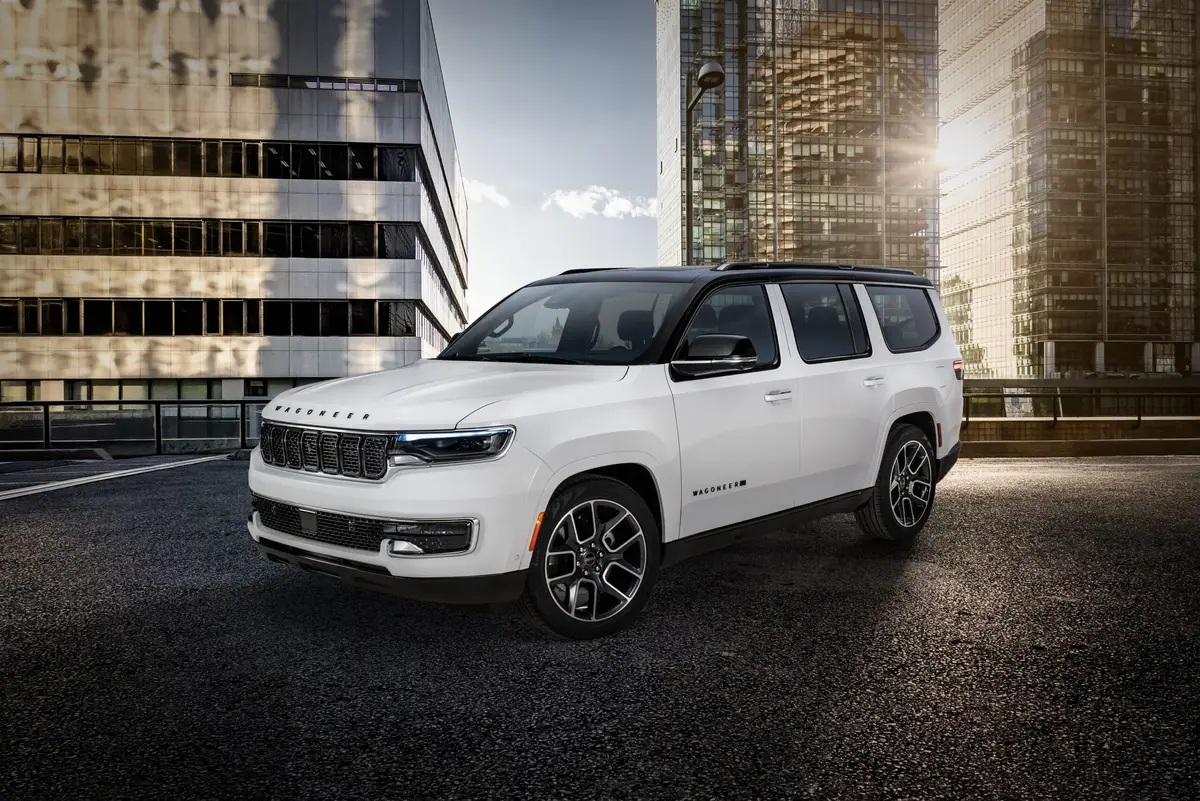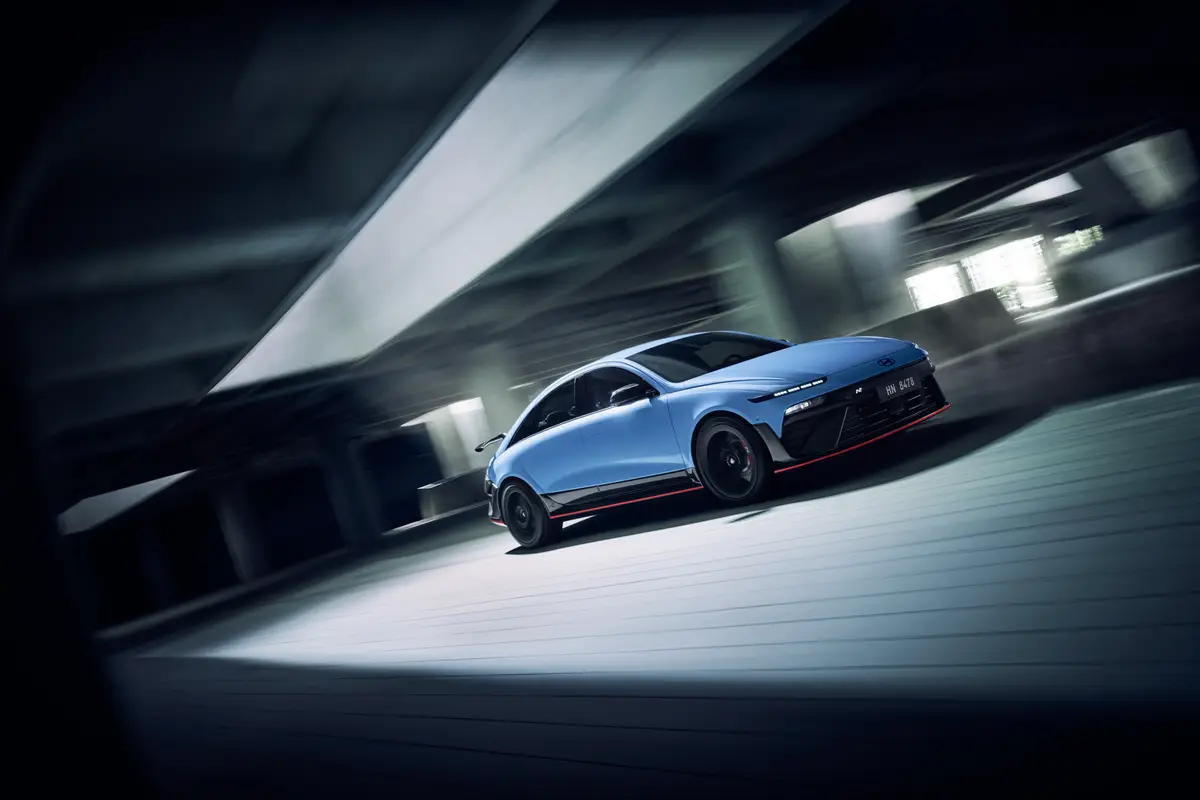Mother Proof's view

Before the 2011 Ford Explorer arrived in my driveway, I have to admit that I was riddled with preconceived notions about this vehicle that’s as American as apple pie. Years ago, in anticipation of having my first child, I bought an older Explorer. It was big. It was trucky. It felt topsy-turvy, but I could fit a honking-big rear-facing child-safety seat in it easily. Today’s Explorer is a completely new animal (and by completely new, I mean it shares nothing with its predecessor other than its name), one that is altogether pleasant for the whole family and nearly carlike to drive.
While some people put their SUVs to work with the original intended use of off-roading and towing, most use them more for navigating urban jungles. The new Explorer, which is a crossover, can fit either group. The Terrain Management System in the all-wheel-drive Explorer will appeal to a wide array of people who want their family hauler to be able to safely handle a variety of weather and terrain conditions, but don’t want to have to fuss with complicated settings. This system let me choose the right setting for regular driving, snow, sand or mud by simply turning a dial. There’s easy access to a button in the middle of the dial for hill decent control. The crossover handles the rest seamlessly.
The Explorer has responsive acceleration, just-right braking and a smooth and surprisingly quiet feel on the road. The seven-seater also has improved its gas mileage by about 20 percent over the previous generation.
Ford smartly decided to bring on a vehicle line director for the Explorer who knows the ins and outs of family life and could inject her own experiences into the crossover. Ford’s Judy Curran, a mom of three between ages 18 and 22, is all too familiar with loading loot from one dorm room and moving it to the next. Hence the power tailgate and power-folding third row, both part of an optional luxury-seating package.
There’s an Explorer out there for families with differing budgets. The Explorer base model with front-wheel drive starts at $28,190. My test SUV, an Explorer Limited with all-wheel drive, had a starting price of $39,190.
EXTERIOR
I had no idea that the Explorer was going to be such a head-turner. During my weeklong test drive, people were slowing down to look at it parked in my driveway. When pulling into a coffee shop, a group of businessmen were staring so intently I got a little self-conscious and asked if I had a low tire or something. Then, the gas station clerk came out to ask me if I was driving the new Explorer. “Beefy,” he said.

The new Explorer is a modern interpretation of the old Explorer. It’s clearly a Ford, but beyond that it’s more aerodynamic and sporty looking than older models. The rear spoiler and center roof-mounted antenna give a young vibe to the crossover, and now it looks like a slightly more mature big brother to the Ford Edge.
The Explorer is larger than the previous version. While it definitely doesn’t feel that big to drive or park, thanks to the incredibly small turning radius, it does feel large when parking in a garage. I wished my test Explorer had front parking sensors because I had a hard time getting a feel for where the front bumper was. This required me to take two stabs at pulling into my home’s garage each time.
While my youngsters were able to climb up and into the Explorer pretty easily, for those of you from the Sandwich Generation — caring for children as well as aging parents — I’d expect the step-in height would be too much to manage for those with limited mobility.
The Explorer has a standard 280-horsepower, 3.5-liter V-6 engine that uses regular gas. It has a towing capacity of 5,000 pounds. This engine gets an EPA-estimated 17/25 mpg city/highway with front-wheel drive and 17/23 mpg with all-wheel drive. There’s also an optional 237-hp, 2.0-liter inline-four-cylinder engine.

SENSE AND STYLE
Family Friendly (Not Really, Fair, Great, Excellent): Great-Excellent
Fun-Factor (None, Some, Good Times, Groove-On): Good Times
INTERIOR
The Explorer’s interior and I had a bit of a love-hate relationship. While I love the standard third row, its power-folding feature needed some refinement. When loading my daughter’s bike into the cargo area, the bike was leaning against the side of the cargo area and hit the power-folding buttons. The seats started to fold onto the bike before I could move it off the buttons. This seems like a design oversight at minimum. For families who fully load their cargo area on a regular basis, this might be a major hassle.

The Explorer’s standard second-row bench splits in a 60/40 configuration, but oddly the seats don’t slide back and forth. If you want to move the seat forward to create more legroom for the third row or slide the seat back to make more legroom for the second row, you’re out of luck. To expand the cargo space, you can flip and fold the second-row seats forward. I only wish this was done with a power button as well since the seats were on the heavy side to operate manually. The Explorer offers optional second-row bucket seats in the second row for $750.
There are ample air vents for passengers in all three rows and separate heat controls for rear passengers. The driver can operate these in the front or hand that chore over to second-row passengers able to reach the control panel at back of the center console. In the second row, cupholders can be found in the fold-down center armrest and the back of the center console. There’s also a standard 110-volt outlet on the back of the center console so you can plug in gaming systems or anything else requiring a power supply. Moms of infants, think bottle heater!
The third row is split 50/50 and holds two passengers. There are two cupholders in the third row as well as open storage bins that come in handy when you’re hauling kids.
While I loved using the voice controls with the MyFordTouch system, I hated just about everything else about it. It was overly complicated and distracting, and it felt like the bad old days when I would waste hours and hours fighting with Microsoft technology to make it do what it was supposed to. MyFord Touch was slow to react to my touch. In pressing the temperature up button five times, the system would think for a few seconds before deciding to finally react. My girls did love the voice commands and often asked me to “push the button” so they could ask the car to change radio stations. That was novel for about a week.
IT’S THE LITTLE THINGS THAT COUNT
Storage Compartments (Puny, Fair, Ample, Galore): Galore
Cargo/Trunk Space (Puny, Fair, Ample, Galore): Galore
SAFETY
Safety is where the Explorer shines. The 2011 Explorer has been named a Top Safety Pick by the Insurance Institute for Highway Safety. To earn this safety award, a car must receive the top score of Good in frontal-offset, side-impact, rear and roof-strength crash tests as well as have an optional electronic stability system, which is standard on the Explorer.
On top of this safety award, the Explorer offers the world’s first inflatable rear seat belts. These optional seat belts are located in the two outboard positions of the second row and inflate in a crash to help distribute the crash forces across a greater area on a passenger’s chest. This feature is a $195 option.
My other favorite safety feature in the Explorer was the optional blind spot monitoring system. Because of its size, I needed all the electronic help I could get when maneuvering on the highway. The blind spot monitor kept an eye on my blind spots for me and let me know with an orange alert light that a car was there. My test car was also equipped with a standard backup camera that was useful from a safety and convenience standpoint. Pulling out of a parking space? No problem!
Curve Control, which is part of the stability system, is another new feature on the Explorer. If you happen to be taking a corner too fast, the vehicle will slow down and monitor your speed to give you more control through that corner.
The Explorer has standard four-wheel-disc antilock brakes, front-wheel drive, anti-roll control, traction control and six airbags, including side curtains for all three rows.
The crossover’s optional safety features include all-wheel drive, high-intensity-discharge headlights, adaptive cruise control, Cross Traffic Alert system and rear parking sensors.
For those installing child safety seats in the Explorer, you might experience a mixed bag of reviews. The two outboard sets of Latch anchors in the second row are wedged a little tight into the seat bight, where the back and bottom cushions meet. The great news is there’s a third set of Latch anchors in the third row on the passenger’s side of the vehicle. The third-row anchors are much easier to access because they protrude from the seat bight. However, trying to worm your way into the third row to load up an infant or toddler would be a pain if you have the second-row bench.
The seat belt buckle receptors in both the second and third rows are all on flimsy nylon bases, making buckling for little ones in booster seats challenging. Find out how the 2011 Explorer fared in MotherProof.com’s Car Seat Check here.
Get more safety information about the 2011 Ford Explorer here.


Former Senior Family Editor Kristin Varela blends work and family life by driving her three tween-teen girls every which way in test cars.
Latest news



